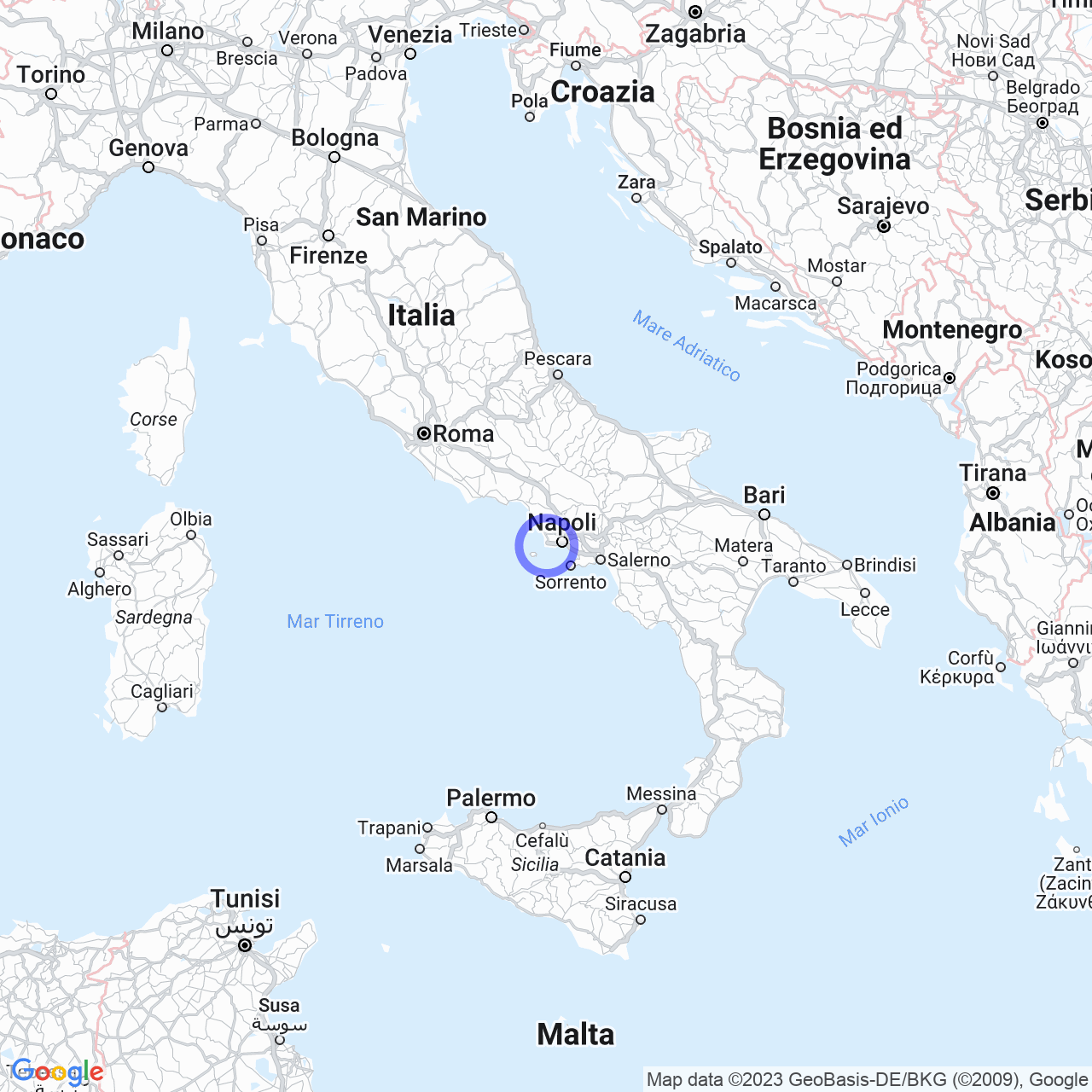Bacoli
Bacoli, the volcanic city on the Campania coast
Let me introduce you to Bacoli, the volcanic beauty of the Campania coast! With its 25,126 inhabitants, it is the first municipality to the northwest of the Phlegraean Peninsula, located on the Gulf of Pozzuoli. Bacoli offers ancient Greek-Roman sites such as Baia, Lake Fusaro, Miseno, a part of Cuma, and Miliscola.
Geology
The area of the Bacoli municipality is of volcanic origin. It is located in the Phlegraean Fields and was formed during the last eruptive phase called the "Third Phlegraean Period". In particular, the area where the town is located is characterized by an alignment of seven volcanoes, arranged on a single axis.
There are three older volcanoes dating back between 35,000 and 10,500 years ago: Capo Miseno, Porto di Miseno (Bacoli), and the relief that characterizes the ancient center of Bacoli. Instead, to the north, outside the town, we find four more recent volcanoes dating back between 10,500 and 8,000 years ago: the two craters called Fondi di Baia, the Gulf of Baia (Bacoli), and another volcano whose edges and residual reliefs are recognized in Punta Epitaffio.

History
Bacoli was founded by the ancient Romans who called it ''Bauli''. In Roman times, it was a renowned holiday resort almost as famous as nearby Baia (Bacoli). Quintus Aurelius Symmachus said of Bauli: "Our destination is this village of Bauli, where the love of the gods is well-known because they spend their holidays there in the most beautiful months of the year..."
Following the fall of the Roman Empire, the city of Bacoli declined, also due to some geological phenomena such as the Phlegraean bradyseism and erosions. In the 17th century, the city was reborn and became one of the favorite destinations for Europeans.
The current municipality, recognized with r.d. 19 January 1919 n. 111, includes, in addition to today's Bacoli, also the remains of ancient "Bauli", the ancient Roman cities of Baia (Bacoli) (whose ruins extend to Lake Fusaro) and the portion of the ancient Greek city of Cuma.
Attractions in Bacoli
Bacoli is a city full of history and natural beauty. Here are some of its attractions.
Lake Fusaro
One of the most suggestive places in the city is Lake Fusaro. It is located between Bacoli and Cuma and is surrounded by oak, cypress, and maritime pine trees. One of the attractions of this lake is the Vanvitelliana house.
Baia (Bacoli)
The city of Baia (Bacoli) was famous in the past for its thermal baths. Today, you can visit the archaeological remains of these Roman baths and admire the Aragonese castle.
Miseno (Bacoli)
Miseno (Bacoli) was once the seat of the praetorian fleet of the Roman emperors. Today, you can visit the ruins of this ancient site and enjoy the spectacular view of the Gulf of Naples from the top of the promontory.
Cuisine and Nightlife
Bacoli has a lot to offer when it comes to cuisine and nightlife. With its coastal location, there are many fish specialties available, such as the famous spaghetti alle vongole.
The nightlife in Bacoli is vibrant. There are many bars and pubs where you can enjoy a night out with friends. However, Bacoli is not just about fun. The city is also famous for its tranquility and relaxation.
How to get there
Bacoli is about 20 kilometers from the center of Naples. You can easily reach the city by car or train from Naples Central Station. In addition, there are buses that regularly depart from Mergellina station.
Conclusions
Bacoli is a city not to be missed by anyone visiting Campania. With its history, natural beauty, cuisine, and nightlife, it offers something for everyone. If you are planning a visit to Naples, you must include Bacoli on your list of places to visit.
